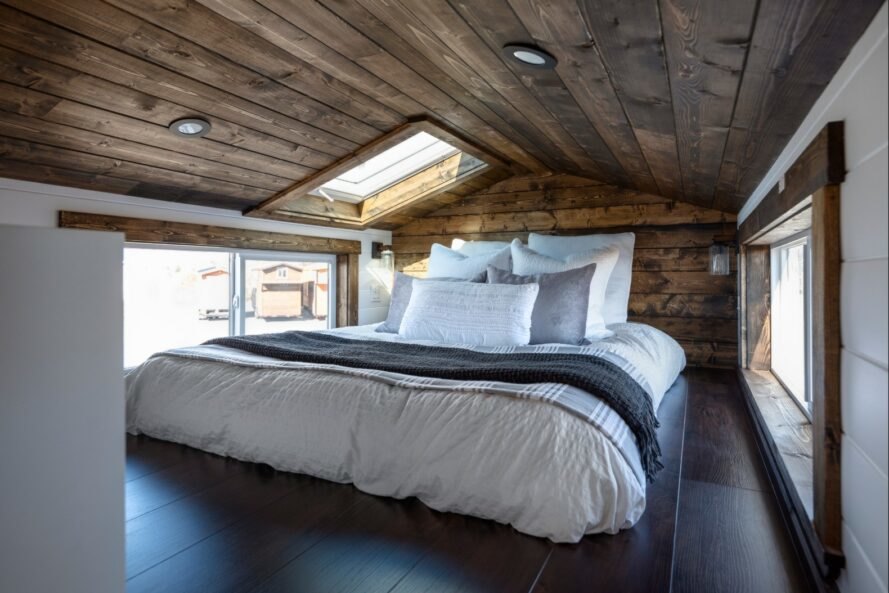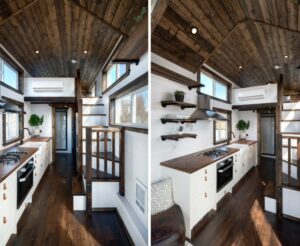7 Things to Check Before You Buy a Used Tiny Home on Wheels

Tiny Home Builders can help you simplify your life and live in tiny. We’ve built hundreds of Tiny Home on Wheels. We have books, plans, workshops trailers and houses to help you build your dream.
Have you ever thought about living in a tiny house? They’re fairly popular right now and can be an affordable way to live if you’ve got some skills or capital to get one put together on your own. There are plenty of reasons you might want to buy one instead of building one, but it’s always good to make sure you’re getting the best deal on your tiny home if you do decide to buy used. Here are seven things you should look out for before buying a used tiny home on wheels.
How old is the tiny house?
Make sure you know how long it’s been since it was built. While tiny houses have low maintenance costs, some materials and systems age faster than others. There isn’t really any set rule of thumb when it comes to which materials will last and which ones won’t—it largely depends on how well they were constructed.
Are there any leaks?
Tiny homes are compact and can’t usually support large rooms, but that doesn’t mean leaks don’t happen. Make sure there aren’t any roof or basement leaks before you buy your tiny home on wheels. If there are, it could mean costly repairs down the line. All tiny homes are vulnerable to leaky roofs because of their flat nature and tendency to be parked in areas that aren’t always weatherproofed. If you find anything suspicious, ask for repair estimates from a couple different companies; that way you can figure out if it makes sense for your budget and timelines.
Are there appliances included?
Tiny houses are usually outfitted with small appliances like stoves, microwaves, and fridges—but if you’re buying used, check that they’re in good condition. If they’re not included or aren’t working well, factor these costs into your budget.
You Can Read Also : HOW TO SET UP AN EFFICIENT INTERNATIONAL PARCEL SHIPPING PROGRAM
Does it have a reliable water system?
Tiny houses are small, so water use is naturally limited. But if you’re interested in buying a tiny home that will serve as your primary residence, it’s good to know that most tiny house owners replace their septic tank with an RV holding tank for portability and convenience. Be sure you understand what kind of water system your potential home has before signing any paperwork. If it doesn’t have its own reliable water system or if it relies solely on rainwater or well water, be sure you can provide yourself with proper water sources before purchasing a tiny house built for travel.

Is there adequate insulation?
Tiny homes on wheels are, well, small. That means they don’t have a lot of space for thick insulation in exterior walls. When looking at used tiny homes, make sure that all of their external walls and roof are insulated with high-quality material like spray foam or rigid insulation panels. More heat loss will mean higher utility bills and possibly costly upgrades down the road.
Do the windows open and close easily?
A lot of tiny homes on wheels have issues with windows that get stuck when they should open. This can become an issue in situations where you need to be able to keep them open in order to ventilate or cool down your tiny home, but then close them up quickly in case of rain. If there is no manual way of opening and closing your windows, it’s going to be difficult for you if any of your windows are jammed and you need them closed quickly.
Has it been used as an RV before?
Tiny houses built from kits can be used as RVs, but that’s not their intended purpose. Many tiny house builders include exterior features like water tanks and ventilation systems that make them RV-ready. However, there are some elements of an RV (like plumbing and walls) that could get in your way if you’re building a true tiny house. Make sure you buy one with no intention of turning it into an RV. Otherwise, unless it’s an aftermarket upgrade, you might have to rip out bathroom plumbing or parts of walls—not worth it!